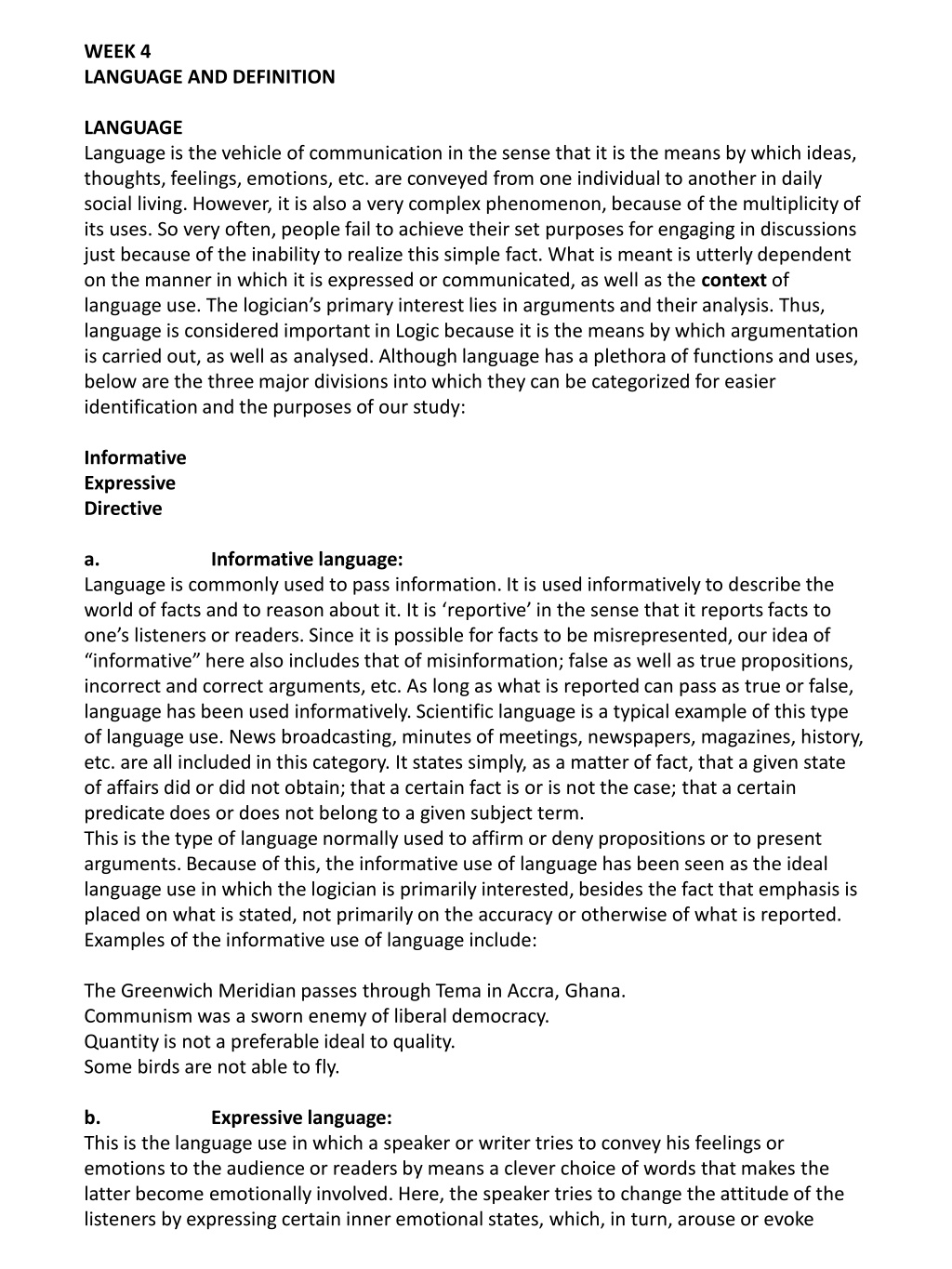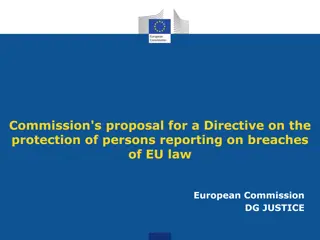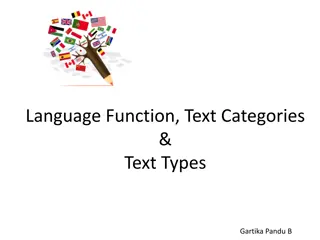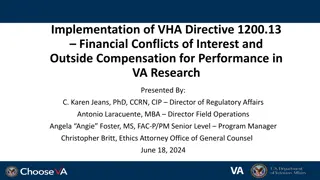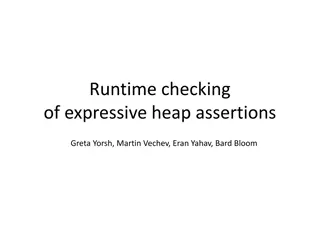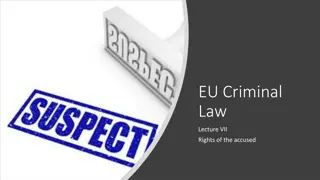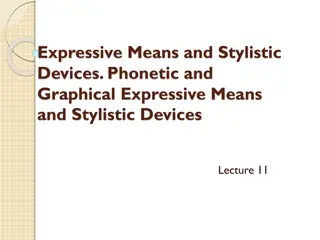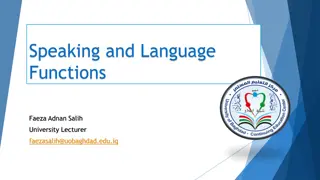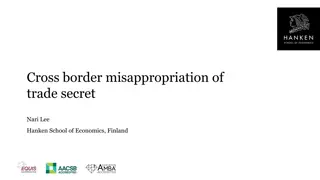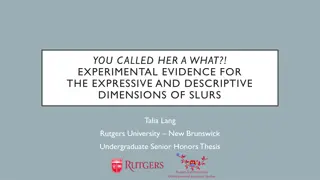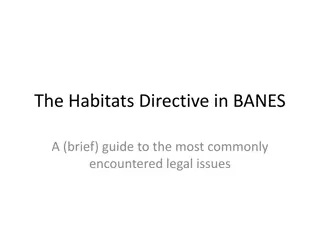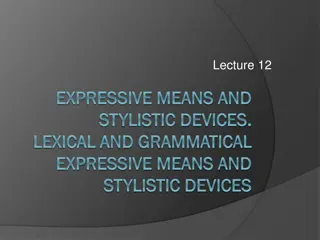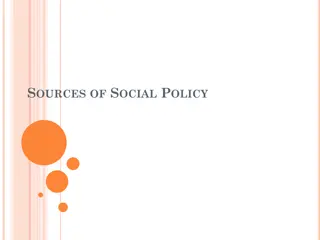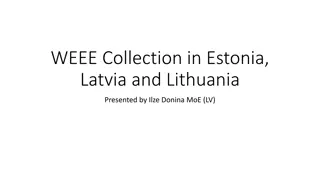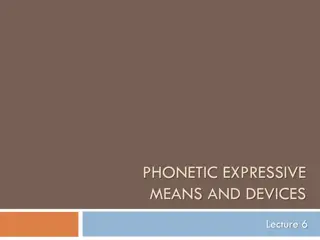Understanding Language: Informative, Expressive, and Directive Uses
Language serves as a vital medium for communication, allowing the conveyance of ideas, thoughts, and emotions. It is a complex phenomenon with diverse uses. This text delves into the three major divisions of language use - informative, expressive, and directive. Informative language conveys facts, while expressive language evokes emotions, and directive language influences actions. Each type plays a crucial role in everyday interactions and communication.
Download Presentation

Please find below an Image/Link to download the presentation.
The content on the website is provided AS IS for your information and personal use only. It may not be sold, licensed, or shared on other websites without obtaining consent from the author. Download presentation by click this link. If you encounter any issues during the download, it is possible that the publisher has removed the file from their server.
E N D
Presentation Transcript
WEEK 4 LANGUAGE AND DEFINITION LANGUAGE Language is the vehicle of communication in the sense that it is the means by which ideas, thoughts, feelings, emotions, etc. are conveyed from one individual to another in daily social living. However, it is also a very complex phenomenon, because of the multiplicity of its uses. So very often, people fail to achieve their set purposes for engaging in discussions just because of the inability to realize this simple fact. What is meant is utterly dependent on the manner in which it is expressed or communicated, as well as the context of language use. The logician s primary interest lies in arguments and their analysis. Thus, language is considered important in Logic because it is the means by which argumentation is carried out, as well as analysed. Although language has a plethora of functions and uses, below are the three major divisions into which they can be categorized for easier identification and the purposes of our study: Informative Expressive Directive a. Language is commonly used to pass information. It is used informatively to describe the world of facts and to reason about it. It is reportive in the sense that it reports facts to one s listeners or readers. Since it is possible for facts to be misrepresented, our idea of informative here also includes that of misinformation; false as well as true propositions, incorrect and correct arguments, etc. As long as what is reported can pass as true or false, language has been used informatively. Scientific language is a typical example of this type of language use. News broadcasting, minutes of meetings, newspapers, magazines, history, etc. are all included in this category. It states simply, as a matter of fact, that a given state of affairs did or did not obtain; that a certain fact is or is not the case; that a certain predicate does or does not belong to a given subject term. This is the type of language normally used to affirm or deny propositions or to present arguments. Because of this, the informative use of language has been seen as the ideal language use in which the logician is primarily interested, besides the fact that emphasis is placed on what is stated, not primarily on the accuracy or otherwise of what is reported. Examples of the informative use of language include: Informative language: The Greenwich Meridian passes through Tema in Accra, Ghana. Communism was a sworn enemy of liberal democracy. Quantity is not a preferable ideal to quality. Some birds are not able to fly. b. This is the language use in which a speaker or writer tries to convey his feelings or emotions to the audience or readers by means a clever choice of words that makes the latter become emotionally involved. Here, the speaker tries to change the attitude of the listeners by expressing certain inner emotional states, which, in turn, arouse or evoke Expressive language:
similar feelings in the audience. Thus, language is used here to vent or arouse sentiments. The expressive language should not be confused with when we sometimes speak of expressing opinions, beliefs, or convictions; such usage, at bottom, refers to the informative usage of stating or declaring . This is because, strictly speaking, to express an opinion is basically to state or declare it. It does not mean to use language expressively in the sense just enunciated above, because expressive language use refers to the expression of emotions, not to the passing of information, or the stating of facts. Examples of expressive language use abound in everyday life: Oh, my! That s too bad ; shouts of enthusiasm, like, Wow! or love, Darling , used to express delicate passion. Poems, worship, or lyrics are normally filled with the expressive use of language. But the bottom line is that the expressive language hardly qualifies as does the informative as true or false because one can hardly qualify exclamations as True or False . The reason is simply that the aim of the speaker is not to pass information, or receive affirmation, but primarily to convey strong feelings. c. This is the type of language use intended to cause or prevent overt action; e.g. commands and requests. It is intended to get results, by virtue of causing or preventing action of the indicated kind. E.g. Two, please , said to the waiter in a bar, directs him to serve two bottles of drink. Also, Don t move , said by the policeman to a driver, is meant to effect the cessation of movement; Eat! barked by an angry mother at her child indicates the command to perform the stated action; etc. The difference between a command and a request becomes clear, then, when we realize that a request is often accompanied by a soft tone of voice, as well as the subtle addition of such expressions as, Could you , If you don t mind , May I , please , kindly , etc. A question may become directive if it requests an answer. But the directive discourse is, like the expressive type, neither true nor false; it can only be reasonable and proper, or unreasonable and improper. Finally, reasons can also be given as to why a command or a directive may be obeyed; and when the statement of those reasons accompanies the command or request, the whole discourse translates into an argument, e.g., Directive language: Avoid casual sex. Many have died as a result of not believing that AIDS is real. FORMS OF DISCOURSE Form of language refers to any of the four groups to which a language ordinarily belongs: declarative, interrogative, imperative, and exclamatory; while the function refers to how it has been used or the function it is intended to perform within a given context. Thus, form and function must not be confused. This point is of utmost importance because language may be of any form declarative, interrogative, imperative, and exclamatory and yet result into any function whatsoever, depending on the intended meaning. This is why the focus must be on the function or meaning of the user instead of on the form. For example, the expression, He is a dangerous person , is certainly declarative in form; but it might function as a directive to avoid him or to be careful when one deals with him. Also, I enjoyed myself at your party , although declarative in form, is primarily expressive of the utterer s thanks and appreciation to the
celebrant for inviting him or her to the party. Aren t we late? may be interrogative in form; but it may also boil down to a simple directive to hurry up. Again, depending on context, Keep your mouth shut! , which is primarily imperative in form, may function informatively by reporting that a delicate situation is around the corner, and hence, the need for careful talk. Alternatively, it may be an expression of strong disagreement with another s view. O my God! is exclamatory in form, but can still pass for an expression of horror or disgust, or it may be informative to the effect that the worst has happened. This distinction between the form of discourse and its intended function must be taken seriously to mind because it is of utmost importance in Logic. Hence, as students of Logic, we must be able to identify and disentangle the informative function of language from all others through a careful attention to the function being performed by an expression. Although the grammatical structure of a sentence could sometimes indicate its function, there is no necessary connection between function and grammatical form; between function and content in the sense of what is asserted therein. However, one possible way of resolving this problem is by taking a close look at the context, which, and which, alone can determine the function and intended meaning. But it must be reiterated that there is no mechanical method of distinguishing between informative or argumentative language from languages of other functions. Besides studying the context, this requires careful thought and an awareness of, and sensitivity to, the flexibility of language and the multiplicity of its uses. DEFINITION Language, as was said in the last section, has a multiplicity of uses; and this often leads to undue disagreements and disputations. Due to this problem, it is necessary to define one s terms in order to minimize misunderstanding and ambiguity so that knowledge can be aided. Thus, another important element in the study of Logic is Definition. A definition is a statement which breaks a logical term down into its constituent or essential parts, namely genus and difference (in a process of description). We generally define an object, or a concept, by distinguishing within it those sensible notes or characteristics that make it the kind of thing it is and no other. One function of definition, in general, is to set limits to the meaning of the thing to be defined, in such a way as to narrow it down to ease comprehension. If I define paper as a material made from wood on which writing is done especially in modern times, I automatically exclude other kinds of materials from the definition, such as sand, stone, cloth, plastic, glass, rubber, metal, etc. Thus, the purpose of definition and division, each in its own way, is to improve and perfect our conceptual knowledge of objects that are known only in a confused and imperfect sort of way. Thus, in defining a word, term or phrase, we are actually describing it by giving its properties, in order to arrive at its exact meaning, pass information around, and so communicate effectively. In what follows, attempt is made to explain the essential mechanisms that come into play in definition, the types, as well as purposes of definition. Genus and difference While genus refers to the family or group to which a thing naturally belongs, i.e. the sensible notes it shares with certain other things of the same type, difference refers to the other notes that differentiates a thing from other types of things belonging to other families distinct from the one to which that thing belongs. For instance, the term, human , belongs to the genus, rational , which, at the same time sets it apart from all other things, say plants . Thus, in definition, a thing
is placed in its genus, which affords it a difference that also sets it apart from other things the mind can possibly conceive. Furthermore, the definition of clock as a device used for measuring time immediately places it in the genus, device , and, at the same time, sets it apart from other things that do not belong that genus. This is what is meant by saying that a thing is defined by breaking it down into its genus and difference. Definiendum and Definiens Every definition has two components, viz: definiendum and definiens. The definiendum refers to the concept, symbol, word, phrase or term to be defined, while the definiens is the group of words, phrases or sentence actually used in rendering the definition. E.g. Definiendum Definiens all the citizens of a state is the operating policy, sometimes through duly elected representatives. Democracy A form of government in which the active and free participation of If we take the above as an adequate definition, then democracy is the definiendum, i.e. the concept to be defined, while the whole of A form of government in which duly elected representatives, becomes the definiendum. Purposes of definition: To increase vocabulary: When the meaning of a concept, or a word, is not known to us, we can ask for its definition from the person who has used it, or look it up from the dictionary, in order to enrich our personal word power. To eliminate ambiguity, confusion and misunderstanding: Quite often, a given word can have more than one meaning, in such a way as to confuse one s listeners or readers, each of whom would bring with them different interpretations, understandings or conceptions of that given expression. If this is the case, then it can only be worthwhile to clarify the intended meaning by defining the particular sense of the word or concept, in order to carry one s audience along, especially during a public discussion. To reduce vagueness and set out limits in borderline cases: Vagueness and ambiguity must not be confused. A term is vague when there are borderline cases (that is, grey areas) of its application, but a term is ambiguous when it has no specific meaning or connotation. Examples of vague words include youth, adult, development, vehicle, democracy, child, etc. Most countries of the world take 18 years as the age of adulthood, while for some others, it is 21; in fact, the same country may even put adulthood at 18, and still maintain that voting age is not until 21. So also, an infant is a child, while a person of 30 or more years remains a child to her parents. Vehicle is clearly vague because it can refer to a car, a ship, an airplane, an army tank, or even a wheelbarrow. To explain theoretically: Here, definition is a tool used, in a scientific manner, to explain how things or phenomena relate or connect to one other in nature. E.g. is the word, force used by Isaac Newton, a renowned physicist, to refer to the product of mass and acceleration .
To influence attitudes: There are cases when a writer or speaker defines words in such a way as to appeal to the emotions of his readers or audience, influencing their attitudes in a desired direction. In this way, the writer moves the readers or audience to jettison a generally accepted idea and embrace his or her own. To resolve dispute: To resolve disputes, we need to define the actual sense(s) in which words are used by arriving at some common ground where every party to the dispute can connect. This saves us from unnecessarily long and fruitless argumentation, which may even have been sparked off by different interpretations of the same expression. Types of definition There are many types of definition, depending on the context and purpose which they are meant to serve. Thus, the purpose of definition often determines the nature of the definition to be employed. Here are the main types of definition: Nominal or stipulative definition: This is a type of definition that arises from the deliberate assignment of (new) meanings to words or phrases. Sometimes, writers offer a completely, or slightly, different or new interpretation of a concept through a rigorous re-examination of the existing popular conceptions of that word, exposing the underlying inadequacies in the ordinary understanding of that concept by people. Real or essential definition: This, as the name readily suggests, is a definition that says what something is in essence, i.e. its exact nature. A real definition places a subject one is defining in its proper category. E.g. A spinster is a woman who has never married. Lexical definition:A lexical definition is a dictionary-based definition. It does not necessarily give a definiendum a meaning it lacked before, but simply reports a meaning it already has, especially as understood and used in the community of the speakers of that language. In this way, it reports how words are actually used by the owners of a language. For instance, the English word, story means something a person naturally enjoys listening to; and this is the primary sense of the word among the English people. However, to the average Nigerian, story is something one would rather hate to hear. Precising definitions: These serve to reduce ambiguity and vagueness by giving the precise meaning or sense intended in a piece of writing or speech, especially if the context is not clear. When terms that have borderline applications (i.e. terms not clearly belonging to one or other of two or more categories of meaning), or many closely related meanings, are used, a pr cising definition may help in indicating the one being referred to. For instance, the term, adult, may be precisely defined as a person who is 18 (or 21) years and above. Theoretical or operational definition: A definition may attempt to formulate a theoretically adequate, or scientifically useful, description of the objects to which a term applies. In science, a new definition is periodically given to support a new theory or to modify existing ones. Persuasive definition: This is used to persuade or influence the attitude of one s readers or audience to get them to agree with the definer, disagree with the definer s opponent, or to do both.
Ostensive definition: (From the Latin verb, ostendere, meaning to show, or to expose) This type of definition is effected by directly pointing to physical instances of the thing or object to be defined, in much the same way as a child receives her first lessons of the names of objects around her. E.g. is showing someone the front tyres of an airplane as a means of getting them to understand why they are designed in a way different from ordinary car tyres. Rules of Definition A definition must be co-extensive with the thing defined. In other words, a definition must neither be too wide as to entail more than is contained in the definiendum nor too narrow as to exclude some essences of the definiendum. A definition must not be expressed in negative sentences, except when absolutely necessary. A definition must not be circular. This rule is closely related to the fallacy of begging the question. Imagine cooking pot being defined as a pot used for cooking ; or evolution being defined as the process by which life evolved . Such definitions are self-defeating because they leave one with little clue as to the actual meanings of the terms being defined, especially if one is seeing the terms for the first time. A definition must not be rendered in ambiguous or metaphorical language, but in simple, univocal terms. For instance, bride need not be defined as the apple of the groom s eye . A definition must state the essential attributes of the definiendum, not its peripheral attributes. In other words, it must give the exact essence or nature of the concept or phenomenon being defined, rather than other accidental or dispensable characteristics it happens to have. Thus, it seems better to define university as a place where people acquire higher education, rather than just a place where students go to do photocopy. Test Questions: Why is language of central importance in Logic? What is the fundamental difference between forms and functions of language? State one possible way of resolving the problem of confused language usage? What is the central importance of definition in Logic? How do the rules of definition facilitate the attainment of knowledge?
